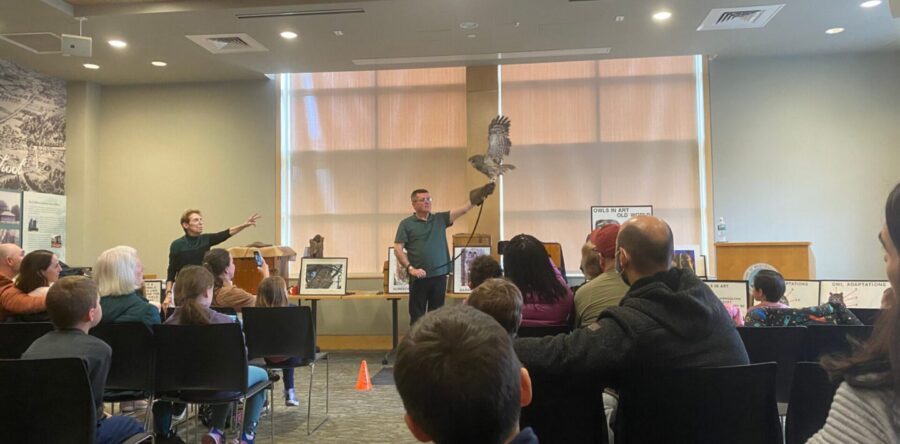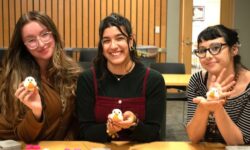By Riley Fontana
Hometown Weekly Reporter
The Westwood Public Library (WPL) had a presentation on Birds of Prey from Wingmasters late last month. Wingmasters is a partnership dedicated to spreading knowledge about North American birds of prey. Wingmasters is made up of Julie Anne Collier and Jim Parks, who are both licensed rehabilitators in Massachusetts.
The presentation covered common birds of prey in Massachusetts, but mainly focused on different breeds of owls. Collier and Parks had live birds with them to display for the crowd for the purpose of using these birds as an educational tool. The first bird that was shown was a Peregrine Falcon, the fastest animal as they are able to reach up to 200mph diving. Falcons are seen in cities, preying on smaller birds; there are local Falcons in Lowell, Boston and Worcester.
The next birds Wingmasters displayed for the crowd were two Eastern Screech Owls, which are known for their incredible ability to camouflage within trees. These birds are usually spotted at sunset, as they are nocturnal and therefore not active during the day.
Collier and Parks then moved on to feature a Barred Owl, which was used to show the feathered eyelids owls have. The Barred Owl is also the breed of owl that makes the hooting noise many associate with owls. Following the Barred Owl was a Barn Owl, which is no longer native to Massachusetts outside of Martha’s Vineyard. Barn Owls are adapted to live inside buildings such as barns, garages and abandoned houses because of the mice these places attract.
The last bird shown was the Northern Saw-Whet Owl. This is a small owl that many seek in the illegal animal pet trade. The hosts made it a point to talk about how important leaving these animals in the wild is, as well as getting these owls to rehabilitators when they are found injured.
There are many more birds of prey native to New England that these presenters discussed including Red-Tailed Hawks, which have a nest in Norwood. This presentation allowed audience members of all ages to learn and enjoy these birds of prey, and now go searching for them locally. However, attendees will now keep in mind that these are vital birds to the ecosystems and should be respected and left alone in the wild.






















